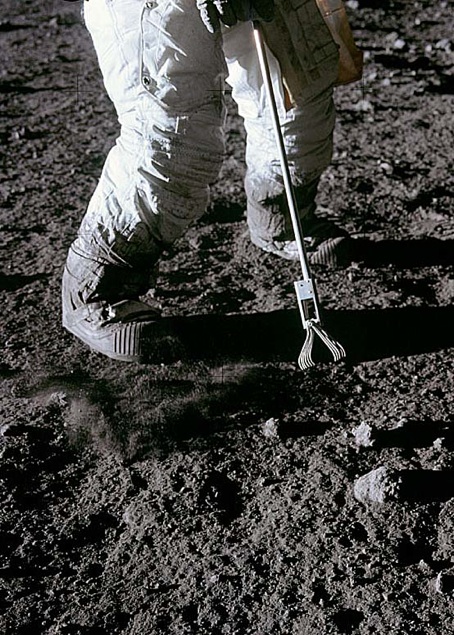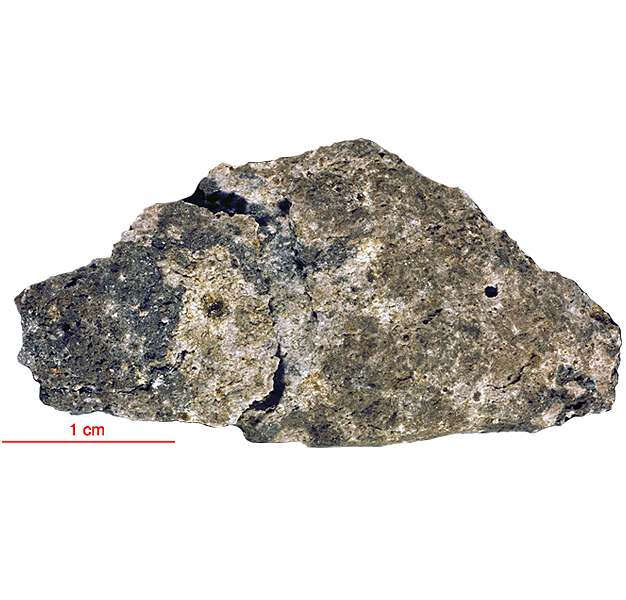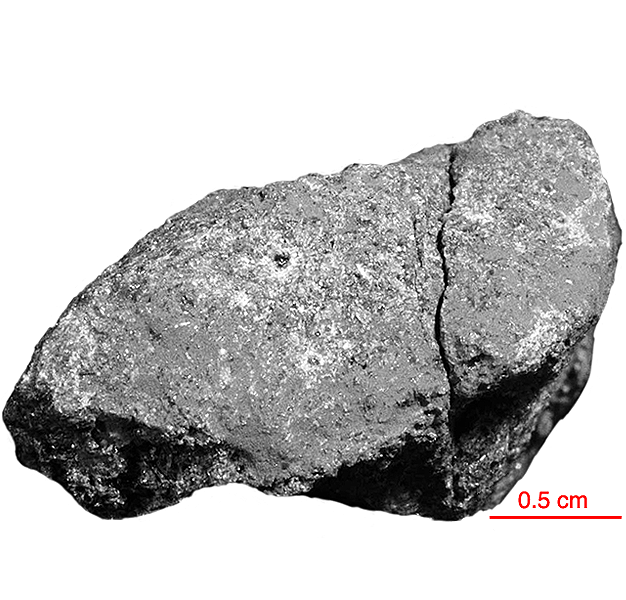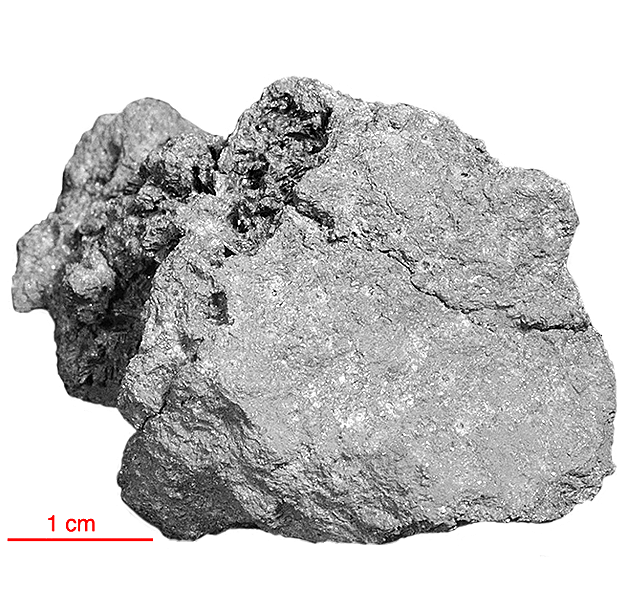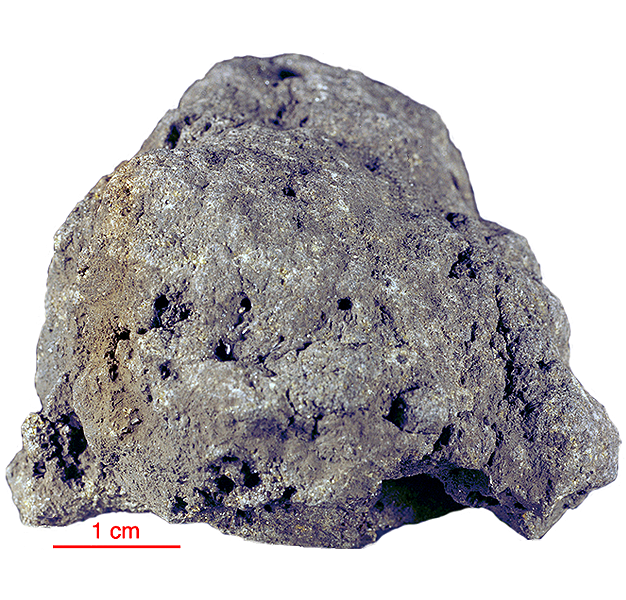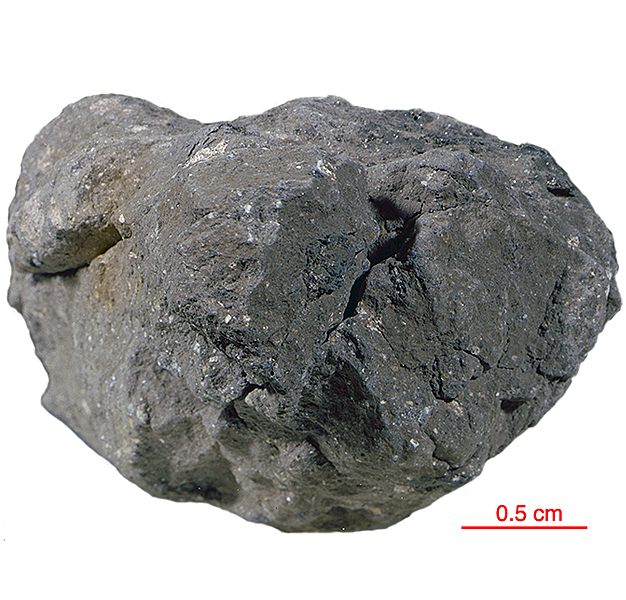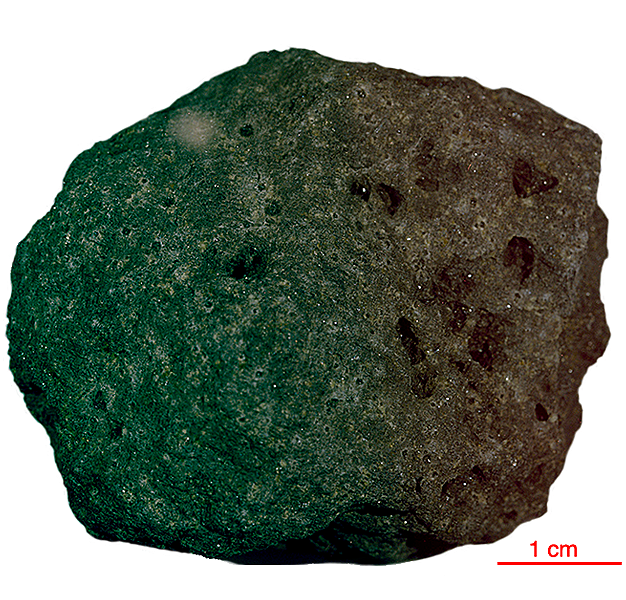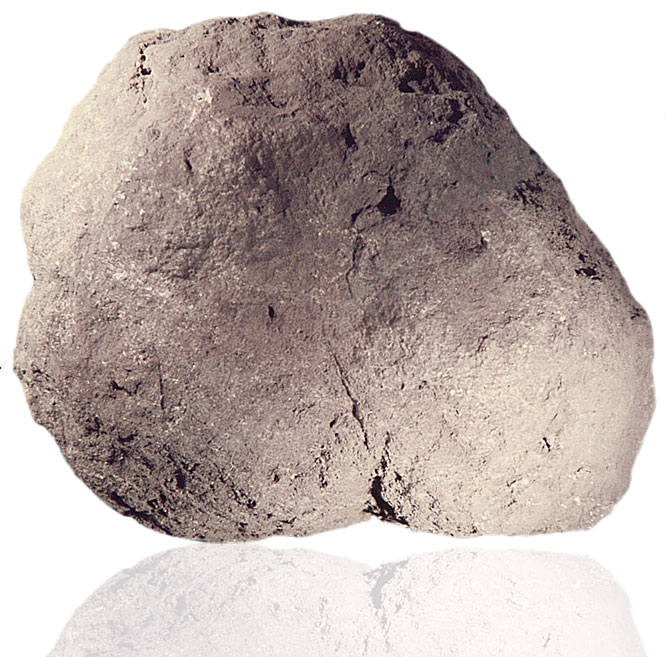
Fact sheet
Sample 12002 is medium-grained porphyritic lunar Mare basalt collected by Alan Bean during the Apollo 12 mission. The sample was erupted onto the lunar surface between 3.15 and 3.35 billion years old.
The rock contains phenocrysts of olivine and pyroxene (both augite and pigeonite). The phenocrysts often host melt inclusions (now crystallised as glass) indicating they formed as skeletal crystals and grew to include the melt. The fine-grained groundmass contains intergrown pyroxene and plagioclase feldspar, often forming bundles of radiating needles. Ilmenite is the other readily identifiable species present in thin section. Accessory minerals include chromite inclusions rimmed with ulvospinel and blebs of metallic iron.
Further details of this and other Apollo samples are here: http://curator.jsc.nasa.gov/lunar/
Apollo 12 returned 34 kilograms of samples, including 45 rocks, samples of lunar 'soil', and several core tubes that included material from as much as 40 centimetres below the lunar surface.
Apollo 12 rocks were almost all basalts, with only two breccias in the returned samples. The basalts at the Apollo 12 site formed 3.1 to 3.3 billion years ago, roughly 500 million years later than the Apollo 11 basalts. Overall, there is much less of the element titanium in the Apollo 12 samples than in the Apollo 11 samples, which explains the more reddish colour of this region. The differences in age and chemical composition between the Apollo 11 and Apollo 12 samples demonstrate that mare volcanism did not occur as a single, Moon-wide melting event.
Apollo 12 was launched on 14 November 1969.
